Leica M Monochrom Digital Rangefinder Camera - Page 30
Index of Thorsten Overgaard's user review pages on Leica M9, Leica M9-P, Leica M-E, Leica M9 Monochrom, Leica M10, Leica M10-P, Leica M10-D, Leica M10-R, Leica M10 Monohcrom, Leica M11, Leica M11-D, Leica M 240, Leica M-D 262, Leica M Monochrom 246, Leica SL, Leica SL2, Leica SL2-S, Leica SL3, Leica SL3-S as well as Leica TL2, Leica CL, Leica Q, Leica Q2, Leica Q2 Monochrom, Leica Q3 and Leica Q3 43:
Leica M Monochrom Type 246
By: Thorsten Overgaard. November 18, 2016. Latest edited May 25, 2019.
Add to Flipboard Magazine.
The Leica M 246 goes to Rome
My previous article on Page 29A was my final words on the Leica M 246. In this article I share my series from Rome with the Leica M 246, as well as a few reader-comments on Leica M 246.
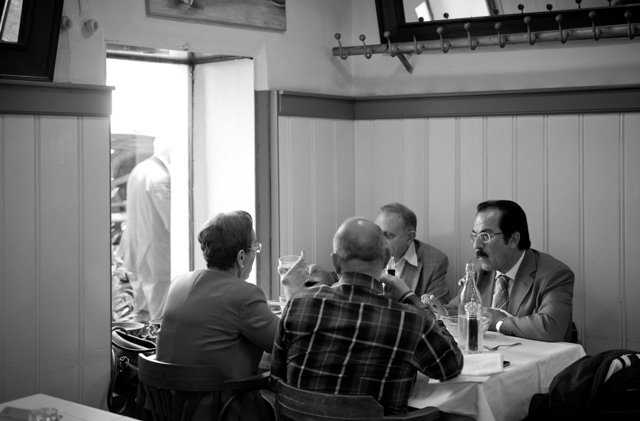
Lunch at restaurant Maccheroni in Rome. Leica M 246 with Leica 50mm APO-Summicron-M ASPH f/2.0. © 2016 Thorsten Overgaard.
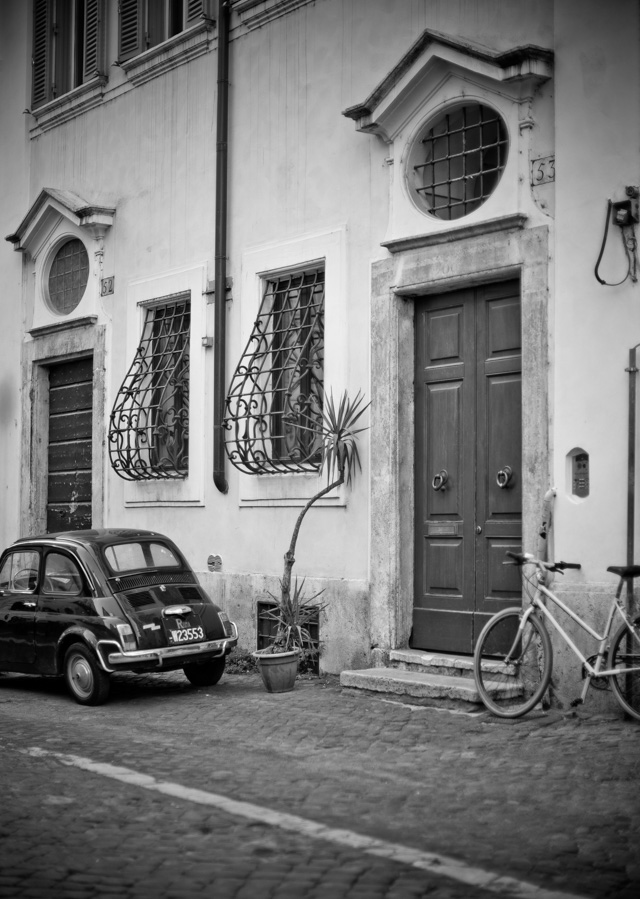
Rome. Leica M 246 withLeica 50mm Noctilux-M ASPH f/0.95. © 2016 Thorsten Overgaard.

Travel in style. Leica M 246 with Leica 50mm APO-Summicron-M ASPH f/2.0. © 2016 Thorsten Overgaard.
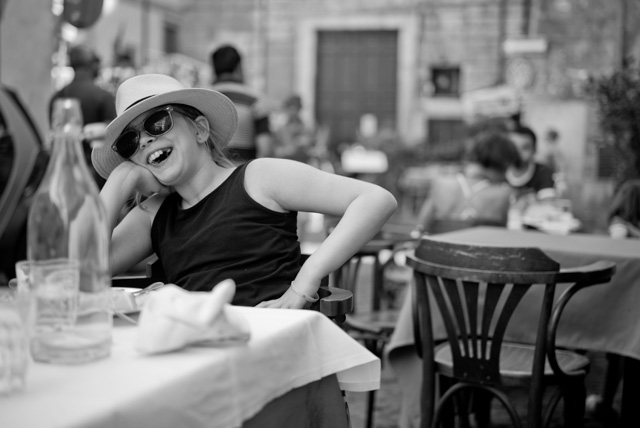
My daughter Robin Isabella hanging out at restaurant Maccheroni in Rome. Leica M 246 with Leica 50mm APO-Summicron-M ASPH f/2.0. © 2016 Thorsten Overgaard.
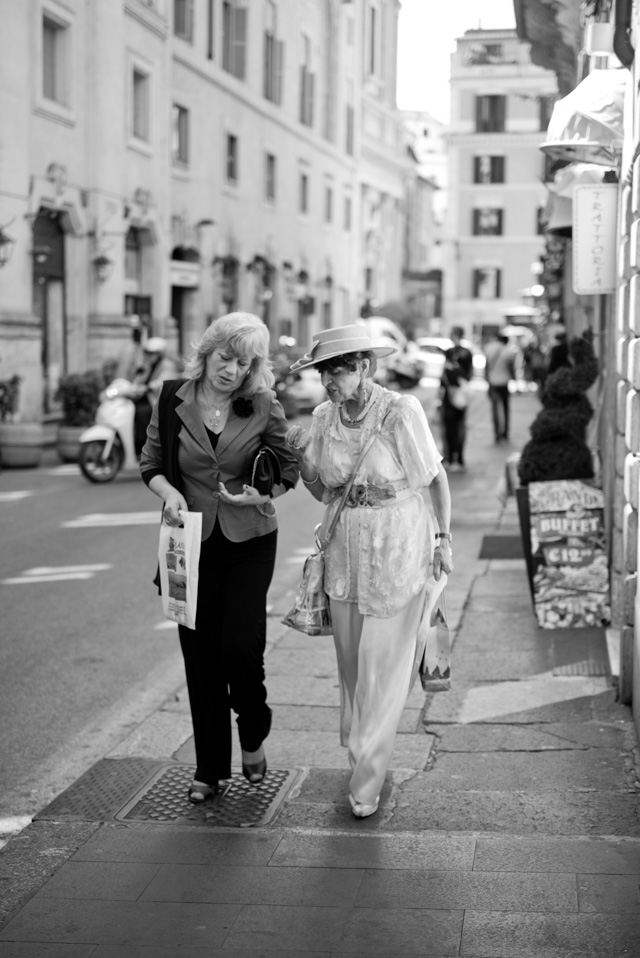
Italian conversation in Rome. Leica M 246 with Leica 50mm APO-Summicron-M ASPH f/2.0. © 2016 Thorsten Overgaard.
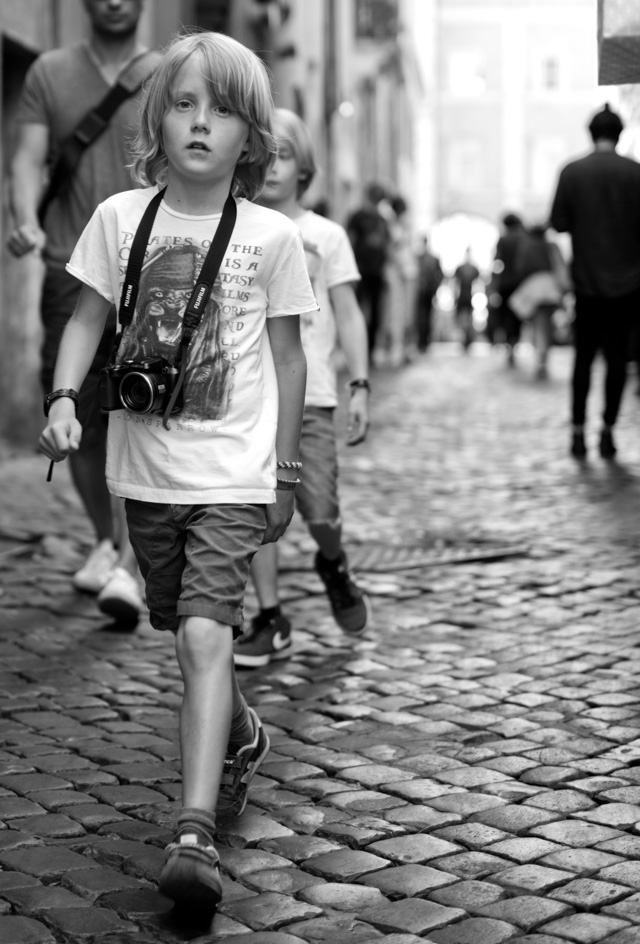
A young photographer out and about in Rome. Leica M 246 with Leica 50mm APO-Summicron-M ASPH f/2.0. © 2016 Thorsten Overgaard.
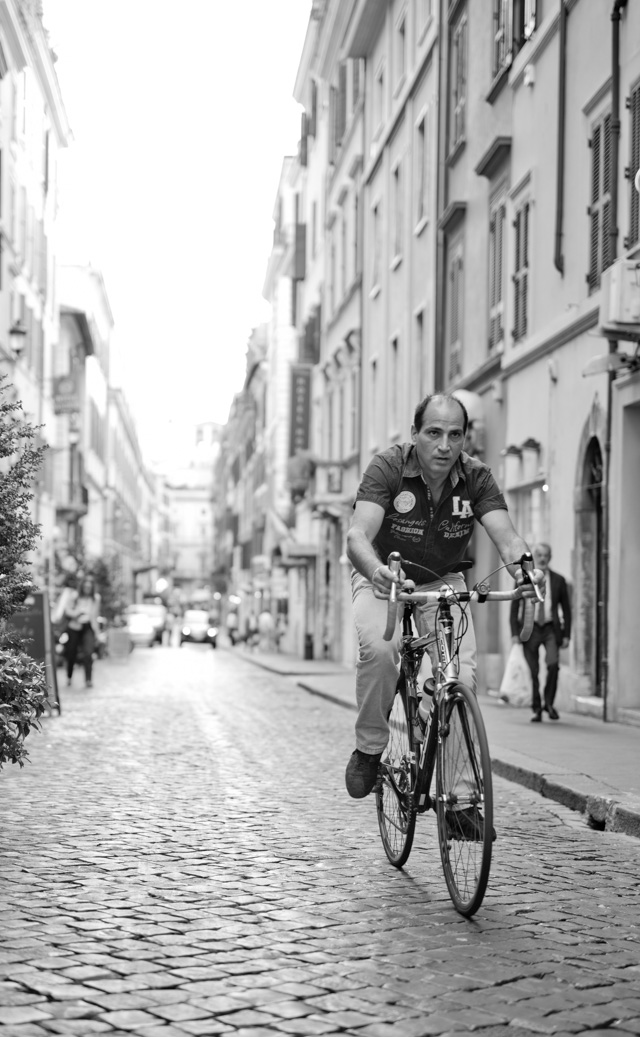
Rome. Leica M 246 with Leica 50mm APO-Summicron-M ASPH f/2.0. © 2016 Thorsten Overgaard.

A subject with a natural frame. Leica M 246 with Leica 50mm APO-Summicron-M ASPH f/2.0. © 2016 Thorsten Overgaard.
A Life With Leica
The documentary "A Life with leica - Featuring Thorsten von Overgaard" was also made in Rome. This is one of my favorite cities for photography. I usually say that Rome is "the real Paris" because it has a lot of the Paris qualities in terms of history and architecture. Moreover, Rome has great people, an enthusiastic spirit and gret food. And the best coffee, not to forget.
A Life With Leica from Northpass Media on Vimeo.

Morten Albek in Rome. Leica M 246 with Leica 50mm Noctilux-M ASPH f/0.95. © 2016 Thorsten Overgaard.

Planning out the day starts with realizing where you are. Leica M 246 with Leica 50mm APO-Summicron-M ASPH f/2.0. © 2016 Thorsten Overgaard.
| |
|
|
| |
“I totally agree with you on M240 vs MM decision. I just cannot loose the color option.”
|
|
| |
- B.B. (Bulgaria) |
|

Rome. Leica M 246 with Leica 50mm APO-Summicron-M ASPH f/2.0. © 2016 Thorsten Overgaard.

Family lunch time outside the restaurant Maccheroni in Rome. Leica M 246 with Leica 50mm APO-Summicron-M ASPH f/2.0. © 2016 Thorsten Overgaard.
| |
|
|
|
|
| |
Buy the new eBook
"The Freedom of Photographic Expression"
by Thorsten Overgaard |
|
| |
|
|
|
|
| |

"The Freedom of
Photographic Expression"
eBook for computer, Kindle and iPad
October 2016 (268 pages) |
|
In this easy to read and apply eBook,
Thorsten Overgaard takes beginners and experienced photographers through the basics of controlling the light and the camera.
This book covers the technical side of photography from beginners level to semi-pro, features a number of photographs by Thorsten Overgaard and chapters on his philosophy on photography.
Only $148
| |
|
|
| |
Buy Now

Instant Delivery |
|
| |
|
|

|
|
| |
"I've bought the new book - made a start reading it - it is really interesting.
I know it's basic at the beginning but it isn't written in a patronizing way. I have been taking photographs for many years and have been lucky enough to be paid to take them for the last seven years; but it's always good to be taken back to the start"
P. S. (UK) |
|
""Really enjoy your writing and teaching"
D. K. (USA)
"I love your insights on photography."
D.B. (USA)
★
★
★
★
★
★ |
|
|

We met this man in the streets of Rome. First he didn't want his photo taken, but then he went into his store and got his Leica to show the lenses and cameras he had. Finally we eneded up doing some casual portraits. Leica M 246 with Leica 50mm APO-Summicron-M ASPH f/2.0. © 2016 Thorsten Overgaard.

Elan out and about in the Overgaard Workshop in Rome. Leica M 246 with Leica 50mm APO-Summicron-M ASPH f/2.0. © 2016 Thorsten Overgaard.

Tough life being a tourist in Rome. Leica M 246 with Leica 50mm APO-Summicron-M ASPH f/2.0. © 2016 Thorsten Overgaard.
| |
|
|
| |
“Thank your for your thoughts. I use Leica M246 permanently, and I use it with dark orange filter (and 35mm Summicron IV), and have to tweak each DNG file, and happy with results."
|
|
| |
- S. Y. (Russia) |
|
| |
|
|
|
|
|
|
| |
Buy the new eBook
"Composition in Photography"
by Thorsten von Overgaard |
|
| |
|
|
|
|
|
|
| |
Composition in Photography
- The Photographer as Storyteller
This book will inspire your photographic eye and make you wonder about all the possibilities you can now see.
In this exciting new book Thorsten Overgaard expands and simplifies the subject of composition. It's elevated from geometric patterns to actual storytelling by practical use of space, rhythm, time, colors, emotions and intuition in your photography.
- The Basics of Composition.
-
Composition in the Third Dimension.
- Picture Stories.
- Accenturating with Light.
- Photograph as a Melody.
- Which lens are you?
- Fear of sharpness?.
- Vanishing Point.
- The most important
element of composition
- What is the unknown secret
why it is you mostly can't get
the Rule of Thirds to work?
- How does a camera see
differently than the eye?
- What does quantum physics and
photography have in common?
- What's the greatest adventure you can
set out on in photography these days?
- A Sense of Geometry.
Only $398.00.
Order now. Instant delivery.
864 pages. 550 Illustrations. |
|
"It’s your best work so far"
"I’m being gently led"
" I love this book!!!"

"The book is incredible"'
"It’s like therapy for the human spirit."
"Beautiful and inspiring"
"Full of practical advice
and shared experience"
'I love how hands-on and
laid back Thorsten's witting style is"
"Inspiring"
"Intense and thought-provoking" |
|
| |
 |
 |
|
100% satisfaction of money back. |
|
| |
|
|
|
|
|
|

Vespa in Rome. Leica M 246 with Leica 50mm APO-Summicron-M ASPH f/2.0. © 2016 Thorsten Overgaard.

Rome. Leica M 246 with Leica 50mm APO-Summicron-M ASPH f/2.0. © 2016 Thorsten Overgaard.
| |
|
|
| |
“Interesting thoughts on the Leica M 246. I still have and use my MM9, but my main camera (for both color and b/w conversions) is my M9-P"
|
|
| |
- K. S. (USA) |
|

Folks from the ministry having a cigaret and a talk outside the office. Leica M 246 with Leica 50mm APO-Summicron-M ASPH f/2.0. © 2016 Thorsten Overgaard.

Rome . Leica M 246 withLeica 50mm Noctilux-M ASPH f/0.95. © 2016 Thorsten Overgaard.

Every afternoon they play chess outside Bar del Fico. Leica M 246 with Leica 50mm APO-Summicron-M ASPH f/2.0. © 2016 Thorsten Overgaard.

Bar del Fico. Leica M 246 with Leica 50mm APO-Summicron-M ASPH f/2.0. © 2016 Thorsten Overgaard.

Italian in Rome. Leica M 246 with Leica 50mm APO-Summicron-M ASPH f/2.0. © 2016 Thorsten Overgaard.

I always think it's a bird when I look at this picture. Finally I looked and saw it's not shaped as a bird. Only the shadow. This is inside a castle-looking private apartment building in Rome. Leica M 246 with Leica 50mm APO-Summicron-M ASPH f/2.0. © 2016 Thorsten Overgaard.

My daughter Robin Isabella with her stylish hat, reading the menu. Leica M 246 withLeica 50mm Noctilux-M ASPH f/0.95. © 2016 Thorsten Overgaard.

Rome. Leica M 246 with Leica 50mm Noctilux-M ASPH f/0.95. © 2016 Thorsten Overgaard.

My daughter Robin Isabella in Rome. Leica M 246 withLeica 50mm Noctilux-M ASPH f/0.95. © 2016 Thorsten Overgaard.
| |
|
|
|
|
| |
Buy the new eBook
"A Little Book on Photography"
by Thorsten von Overgaard |
|
| |
|
|
|
|
| |

Order now - Instant delivery.
More info
★
★
★
★
★
★ |
|
It's a humorous understatement to call this
new eBook by Thorsten Overgaard for
"A Little Book on Photography".
It's a grand book, a history lesson, life experience, a biography and poetry book and brilliant photo book!
All in one beautiful package of 180 pages
to fire you up and get you to love
photography ... unconditionally!
"A Little Book on Photography"
eBook for computer, Kindle and iPad.
New release March 2017.
Intro price only $47 - 180 pages.
| |
|
|
| |
Buy Now

Instant Delivery |
|
| |
|
|

|
|
| |
|
|

Starting every workshop day with coffee and a talk. Leica M 246 withLeica 50mm Noctilux-M ASPH f/0.95. © 2016 Thorsten Overgaard.

Lunch in Rome. Leica M 246 withLeica 50mm Noctilux-M ASPH f/0.95. © 2016 Thorsten Overgaard.

Reading the papers at breaksfast in Rome. Leica M 246 with Leica 50mm Noctilux-M ASPH f/0.95. © 2016 Thorsten Overgaard.

They always talk in Rome, mostly with their hands. Leica M 246 with Leica 50mm Noctilux-M ASPH f/0.95. © 2016 Thorsten Overgaard.
| |
|
|
|
|
|
| |
Join the New Thorsten Overgaard
Photography Extension Course
"My wife game me this course and I absolutely love it.
Now I think more in light and shadows. Used a lot of the techniques on a recent trip and
my photos have improved a lot. Well done, Thorsten!"
S.N. (Mexico)
"I am happy with my purchase of the extension course. Well written, easy to understand"
K.D. (USA)
“I very much enjoy the incredible knowledge”
V.V. (United Kingdom)
"Addictive, beautifully and simplistically written. Just amazing. Cleared my concepts"
V.P. (USA)
"The extension course is the best course I read about photography (and I'm still at the beginning)"
M.S. (Luxembourg)
"I'm already in page 81 of the Extension Course, and your communication and words provoked a change in me at an aesthetic level that I felt but I couldn't explain"
C.L. (USA)
|
|
| |
|
|
|
|
|
| |
 |
|
| |
|
|
|
|
|
| |
|
|
|
|
|
| |
New: The Digital Photographer's Extension Course
Learn the basics of photography with Thorsten Overgaard
I teach you the basics of photography in an easy-to-understand and step-by-step way that anyone from age 12 to 90 years can understand and easily apply. This extension course is for everyone from 12-90 years.
The intention with this extension course is to get you going in your photography adventure with lightning speed and inspire you to reach to new heights.
Enjoy!
Specially tailored for Leica and digital photographers.
The waiting list is over!
After a couple of years with a long waiting list, I have finally redesigned the course so I can handle the students interested in this course. Not only that. The number of pages has gone up from 120 to 340..!
You work at your own pace after you recieve the full package of material via mail. It works as PDF on computer, iPad, Kindle, or - if you like - make your own print.
More info ---> |
|
|
Join the Home School for
Leica and Digital Photographers

Only $998.00


Buy now. Instant delivery by mail.
ITEM #2140-0122 |
|
|
| |
|
|
|
|
|

Some times you look at art and think, "What does it mean?" and in this case ... "Does it really?". Leica M 246 with Leica 50mm APO-Summicron-M ASPH f/2.0. © 2016 Thorsten Overgaard.
| |
|
|
|
|
| |
Buy my "New Inspiration Extension Course"
|
|
| |
|
|
|
|
| |

Need more info?
Read this article. |
|
Get inspired and rebooted!
This extension course if made for you! It can be done at home and travel at your own pace. I have taught workshops for years and the Overgaard New Inspiration Extension Course is my experience compressed to a package of training, articles, drills, assignments and video tutorials that will inspire you and take your photography to the next level! For a limited time my course includes something you cannot get anywhere or anytime else:
A portfolio-review by Thorsten Overgaard.
| |
|
|
| |
"The Overgaard
New Inspiration
Extension Course"
For computer and iPad. 181 p eBook. |
|
| |
Only $798 |
|
| |
|
|
| |
 |
|
| |
|
|
| |

|
|
| |
|
|
Order now - Instant delivery. |
|
| |
|
|
|
|

Elan in the Overgaard Workshop Rome. Leica M 246 with Leica 50mm Noctilux-M ASPH f/0.95. © 2016 Thorsten Overgaard.
Advertisement:

Leica M246 Monochrom Limited Editions
As of May 2019, the Lenny Kravitz Design "Drifter" limited edition with a 28/2 and 75/2 lens was released. A refreshing new brown color.

Lenny Kravitz Design "Drifter" limited edition.
Leica Monochrom Masterclass
For more info on Paris Masterclass, have a look here:

The Thorsten Overgaard articles on the Leica M 246
Here's the complete overview of my articles on the Leica M 246. Enjoy!
Comments..?
As always, feel free to send me an e-mail with comments, suggestions, ideas, corrections
| |
To be continued ...
Coming up next is an interview with Dotan Saguy. Stay tuned.
- - - > |
|
| – Thorsten Overgaard. #1734-1116 |
Leica M 246 Definitions
Aperture = The f/ stop on the camera that regulates how much light passes through the lens. On a f/1.7 lens the lens is fully open" at f/1.7. At f/2.0 the aperture inside the lens make the hole through the lens smaller so only half the amount of light at f/1.7 passes through. For each f/-stop (4.0 - 5.6 - 8.0 - 11 - 16) you halve the light. The aperture of the lens is basically the focal length divided with the f/-stop = size of the hole (28mm divided with f/1.7 = the hole is 45 mm).
ORIGIN: Late Middle English : from Latin apertura, from apert- ‘opened,' from aperire ‘to open'.
ASPH = stands for "aspheric design".
Most lenses have a spherical design - that is, the radius
of curvature is constant. These are easy to manufacture by
grinding while "spinning" the glass. This design
however restricts the number of optical corrections that can
be made to the design to render the most realistic image possible.
ASPH lenses, however, involve usually 1 element that does
*not* have a constant radius of curvature. These elements
can be made by 1) expensive manual grinding, 2) molded plastic,
or 3) Leica's patented "press" process, where the element
is pressed into an aspherical ("non-spherical")
shape. This design allows Leica to introduce corrections
into compact lens designs that weren't possible before. Practically,
the lens performs "better" (up to interpretation)
due to increased correction of the image, in a package not
significantly bigger than the spherical version. The Leica Q 28mm lens has 3 aspherical elements out of 11 elements in the lens. Most Leica ASPH lenses from Leica has 1 or 2 aspherical elements.
| |
|
|
 |
| Normal speric lens (grinded) |
|
ASPH (note the shape of the glass as result of pressing rather than grinding) |
Sphere: ORIGIN Middle English : from Old French espere, from late Latin sphera, earlier sphaera, from Greek sphaira "ball".
Banding = Noise in digital images. Horizontal lines in a horizontal pictures (if the camera is in portrait mode/vertical, the lines will be obviously be vertical). It's simply noise; the result of uncontrolled algorithms working overtime with an image the sensor really can't see because it's very dark. (If your image have vertical lines in it, it is more likely that the sensor needs remapping).
Bokeh = The visual quality of the out-of-focus areas of a photographic image, especially as rendered by a particular lens: It's a matter of taste and usually photographers discuss a 'nice' or 'pleasant' bokeh (the out-of-focus area is always unsharp why the quality discussed is if one likes the way it renders or not by a particular lens). ORIGIN from Japanese 'bo-ke' which mean 'fuzzines' or 'blur.'.
C = Continuous shooting. When the ring by the Shutter Release on top of the camera is moved from OFF to C, the Leica M 246 takes series of images as long as the shutter release is pressed down (3.5 frames per second).
CMOS sensor (as used in Leica Q, Leica M 246, Leica M 240, Leica X, Leica D-Lux, etc)
= (Complimentary Metal Oxide Semiconductor) chips use transistors at each pixel to move the charge through traditional wires. This offers flexibility because each pixel is treated individually. Traditional manufacturing processes are used to make CMOS. It's the same as creating microchips. Because they're easier to produce, CMOS sensors are cheaper than CCD sensors. CMOS allow Live View and use less energy than CCD.
DNG = Digital Negative, an open standard developed by Adobe. It is a single file that contains the raw image data from the sensor of the camera as well as date, time, GPS, focal length, settings, etc.
The alternative is a RAW file + XLM file where the RAW file contains the image information and the XML contains the rest of information about where, how and when the picture was taken.
A Camera Raw profile (that is specific for that camera) in the computer helps the software program, for example Adobe Lightroom, to translate the RAW data into the image.
| |
 |
| |
DOF scale on the lens |
| |
|
DOF = Depth of Field. This is how much of the image will be in focus. The measurement on top of the lens lens shows lines for each f-stop that indicates from which distance to which distance the image will be sharp. Shallow DOF is a generally used term in photography that refer to lenses with very narrow focus tolerance (which can be used to do selective focus; making irrelevant subjects in the foreground and background blurry so only the subjects of essence are in focus and catches the viewers eye).
EVF = Electronic ViewFinder. The EVF-2 is the model that can be used on the Leica M 246 (and Leica M 240 and Leica X)
Exposure Bracketing = The possibility to set the camera to automatically record a series of images where the exposure is above and below what the camera measures. The idea is that at least one of the images will be correctly exposed.
| |
 |
| |
A 28 mm lens has a 74° viewing angle |
| |
|
Focal length = For example 50mm or 28mm. It originally referred to the distance from the sensor (or film in older days) to the center of focus inside the lens. Nobody uses that measurement, except those who construct lenses! For users of lenses, focal length refers to how wide the lens sees. The viewing angle, which is often given in for example 90° viewing angle for a 21mm lens, 74° viewing angle for a 28mm lens, 6° viewing angle for a 400mm lens, etc.
Each human eye individually has anywhere from a 120° to 200° angle of view, but focus only in the center.
Full Frame (FF) = The size of the sensor is 24 x 36mm which is the format Oskar Barnack and Leica Camera AG invented with the first Leica that was introduced in 1925. Many other formats invented since, such as APS, APS-C and all usually refer to Full Frame ratio, by which it means what size they have compared to Full Frame.
| |
 |
| |
Full Frame is "king of photography" |
| |
|
The 24 x 36mm Full Frame format is so "king of photography" that it has continued to be the ideal for all cameras. Besides this, there exists Large Format cameras such as 4x5" (100 x 125 mm) and Medium Format 6x6 (60 x 60mm amongst other sizes in that area).
ISO = Light sensitivity of the camera sensor is given in ISO (International Organization for Standardization). It's a standard that was used in film and is now used in all digital cameras also. The base ISO for the Leica Q sensor is 100 ISO which means that this is what the sensor "sees". All other levels are computer algorithms calculating the effect as if the sensor could "see" more (hence noise at higher ISO levels).
ISO goes in steps of doubling: When the ISO is raised from 100 ISO to 200 ISO, the camera only need half the amount of light to make a picture. For each step in ISO to 400, 800, 1600, 3200, etc the light sensitivity is doubled for the sensor (and the camera sensor only need half the light of the previous ISO to record the same image).
JPEG = A standard for picture format made in the 1990's by Joint Photographic Experts Group). Mostly referred to as JPG as in L1003455.JPG which would be the name for a JPG file from the camera.
Summilux = Refers to the maximum lens aperture - normally f1.4 , "-lux" added for "light" (ie. the enhanced light gathering abilities).
Leica = A compound word derived from " (Lei)tz" and "(ca)mera". Apparently they were originally going to use "LECA", but another camera company already used a similar name in France, so they inserted the 'i' to prevent any confusion.
Lens hood = A tube or ring attached to the front of a camera lens to prevent unwanted light from reaching the lens and sensor. ORIGIN Old English hod; related to Dutch hoed, German Hut 'hat,' also to hat.
Level Gauge = This is a tool in the viewfinder to see if you hold the camera 100% horizontal and/or vertical. You can turn it on in the Menu. On the Leica M 246 you make it visible in the viewfinder by pressing the INFO button (the round one on the back of the camrea by your thumb).
Live View = This is the ability to see the image the sensor see, live, via the screen of a digital camera, or via an electronic viewfinder (EVF).
Meßsucher (rangefinder or distance finder) = Mess = range, sucher = finder. It is always correctly written with the "ß". There are technically not three "s", rather the "ß" and one "s" because it is a word constructed by the combining of two precise words.
ND = Neutral Density filters are grey filters that functions as 'sunglasses' for lenses. They simply block the light so that a lens can work at for example f/1.4 in sunshine. A 3-stop ND filter is recommend for most Leica lenses.
| |
 |
| |
You can change from Process 2012 to 2010 in the bottom right corner of Lightroom (in Develop mode) |
| |
|
Process = In Lightroom the Process 2010 and Process 2012 refers the the usual definition of process (a series of actions or steps taken in order to achieve a particular end. It comes from Latin, 'moving forward').
Lightroom could be said to be a process tool:
1) The first process is when you import the images and the file is recognized by the Camera Raw as from a camera model and that profile is applied to the image. That is simply a camera profile that knows that this number is this type of red for this camera, and so you see the image in the right balanced colors to begin with. That is the import process.
2) Then you make the choice if you wan to use Process 2010 or Process 2012 which is two different ways to process it further. Each have multiple tools it opens up for you to use and those tools are based on algorithms on how the image should behave on a tonal courve if you change contrast, exposure, etc.
3) The export is another process where you define what size and resolution you want, and then start a batch-process so Lightroom performs that process for you on a number of images in one batch (including where they should be saved).
There are numerous other processes that can be performed automatically, like writing keywords and changes into the XMP file of the image, backup to other drives, synchronization with databases, etc.

ND (Neutral Density) filters to put in front of lenses to reduce the amount of light that comes in. They don't have any other effect than that and doesn't change contrast, color or anything.
S = Single image. When the ring by the shutter release on top of the Leica Q is moved from OFF to S, the Leica Q takes one photo at the time (Single). The other possibility is Continuous (see above).
Spot meter = A light meter that measures a small spot of reflections from a surface. For example a SEI spot meter (Salford Electric Instruments) or Pentax one-degree spot meter. Many digital cameas has a built-in spot meter that measures just a spot of 1 to 3 degrees in the center fo the frame.
SLR = Abbreviation for Single-Lens Reflex; the lens that forms the image on the film/sensor also provides the image in the viewfinder via a mirror. The Leica Q has no traditional viewfinder and no mirror. the image seen in the EVF is what the sensor sees.
Summilux = Refers to the maximum lens aperture - here f1.4 , "-lux" added for "light" (ie. the enhanced light gathering abilities). In Leica terminology a Summilux is always a f/1.4 lens and a Summicron is a f/2.0 lens.
Viewfinder = a device on a camera showing the field of view of the lens.
1) A built-in viewfinder in a camera that simply show the frame you get when you look through the viewfinder.
2) A rangefinder viewfinder which is also used to focus the lens. In Leica M cameras two pictures has to meet and lay 'on top of each other' for the picture to be in focus.
3) An external viewfinder, usually on top of the camera in the flash shoe, so as to show the field of view of lenses wider than what the built-in viewfinder can show (15mm, 21mm, 24mm, 28mm etc viewfinders exist)
4) Very simple "aiming-devices" on top of a camera that is simply a metal frame without any optics. Just a frame, as for example very old cameras (the original Leica), or when using cameras in diving where you can't look through the camera.
5) A Electronic Viewfinder (EVF) that shows what the sensor sees "live".

XMP = (Extensible Metadata Platform), an ISO standard for the creation, processing and interchange of metadata for all kinds of resources. Usually when I refer to it, it is archiving the keywords, editings settings, camera brand, aperture speed, GPS data and any other metadata for an image, into the XMP file that is part of a DNG file (digital negative). In Lightroom and other editing tools it is important to make sure the data is saved to the file so they don't stay only in a software or catalog. When the metadata is inside the image file (in the XMP), it can be indexed, searched for and is also imported and shown as part of the iamge info whenever the image file is imported in another software. Where should you keep the info about a photograph? In the XMP, of course!

A couple having breakfast in the hotel in the Brenner Pass early morning on our drive to Rome. Leica M 246 with Leica 50mm Noctilux-M ASPH f/0.95. © 2016 Thorsten Overgaard.
Index of Thorsten Overgaard's user review pages on Leica M9, Leica M9-P, Leica M-E, Leica M9 Monochrom, Leica M10, Leica M10-P, Leica M10-D, Leica M10-R, Leica M10 Monohcrom, Leica M11, Leica M11-D, Leica M 240, Leica M-D 262, Leica M Monochrom 246, Leica SL, Leica SL2, Leica SL2-S, Leica SL3, Leica SL3-S as well as Leica TL2, Leica CL, Leica Q, Leica Q2, Leica Q2 Monochrom, Leica Q3 and Leica Q3 43:
|
![]()
